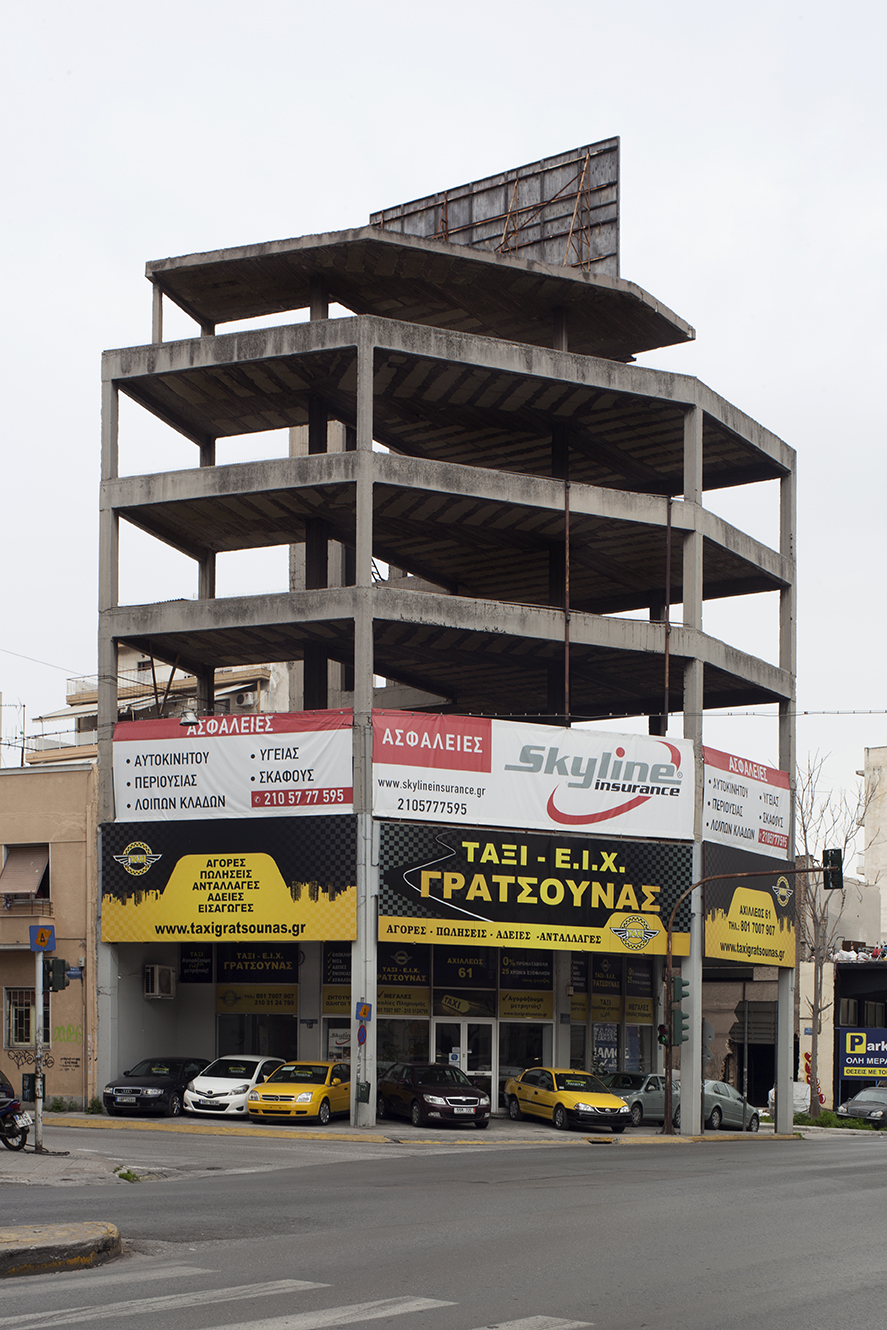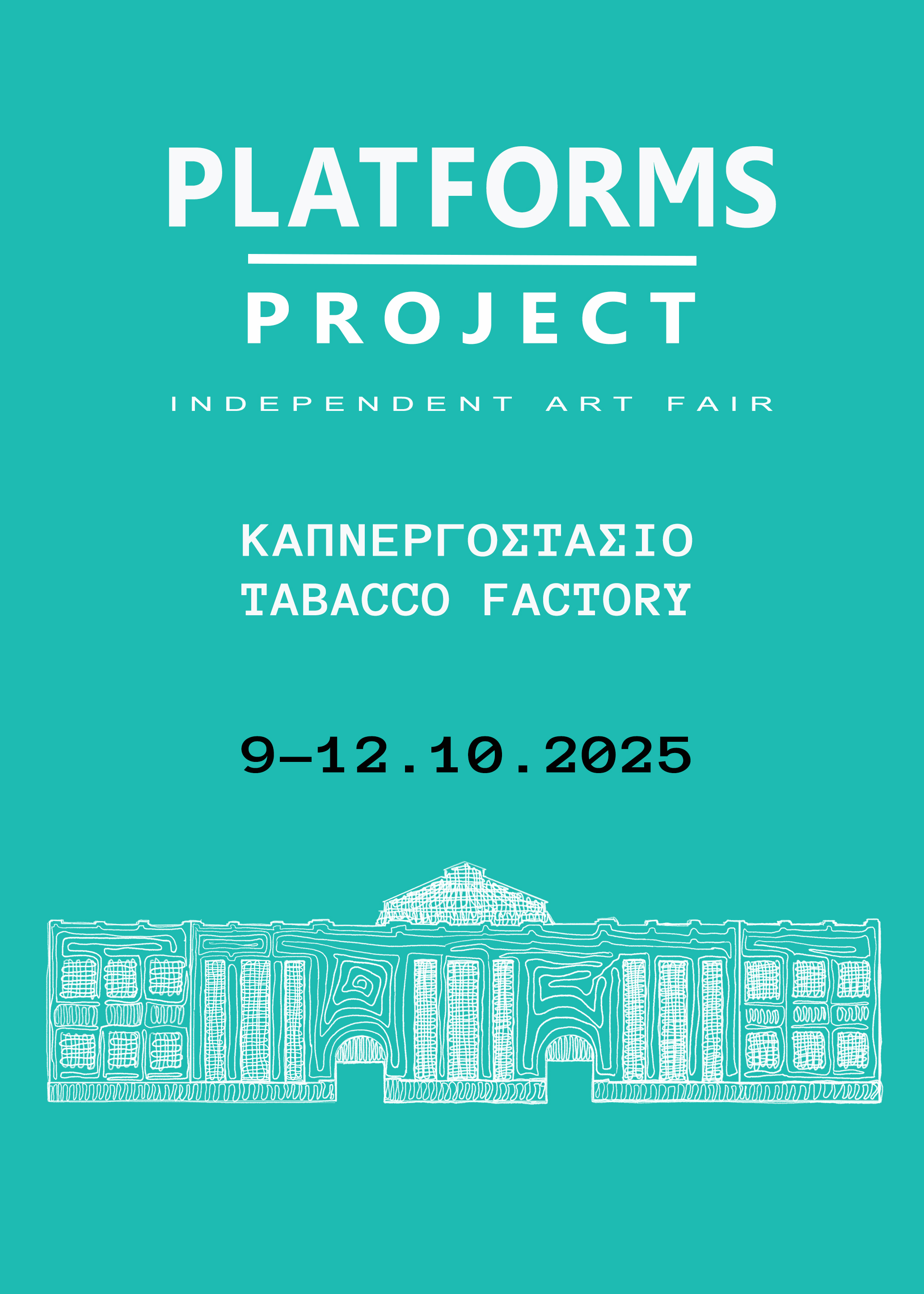German photographer Julius-Christian Schreiner is studying photography at the Fine Arts School of Leipzig, but he’s currently in Athens as an exchange student at the Athens School of Fine Arts (ASFA). I met him one winter Sunday at Kassandra’s, the project space and experimental architecture office in Votanikos, during one of the venue’s ΡΙΦΙΛ cooking events. He was just walking around the area photographing buildings and objects in the street when he passed by the gathering, and sat down with us for a drink. What is mesmerising with his photos is the way he portrays the Athenian landscape as a kind of accumulative sculpture, where different elements and layers build up on the city's surfaces.
Photographed in his flat, no-tilt style, Athenian buildings acquire a kind of monumentality, and although he’s been in town for only a few weeks, Julius has photographed some of the most iconic abandoned buildings in the city centre. However, decay and abandonment are not the subject of these images, as the artist was very kind to point out in the short interview below.
Text by Kiriakos Spirou
All photos from 2017, courtesy Julius-Christian Schreiner

1. Please tell me a bit about yourself, where you come from, about your artistic practice.
I grew up in Hamburg, Germany, which is known as “the gate to the world” — but as my grandfather says, it’s just a gate. Already in my school years I was fascinated by the medium of photography and moving images, and in my early 20’s I worked on several social and cultural projects in Berlin, where I lived since my 18th birthday. Later on, I began studying media design, visited the Lette-Verein photography school in Berlin, and for the last three years I’ve been a student at the University of Fine Arts in Leipzig. My main artistic tool is photography, within which I use different techniques and cameras, from 13x18 large-format analog to digital images.
2. When did you arrive in Athens and what brought you here?
I arrived in Athens about 5 weeks ago, never been here before nor in Greece at all. The city caught my attention already a few years ago, since generally I’m in love with metropoles. I can’t imagine myself living in a small town for a long time. Leipzig, where my university is based, is already killing me because I feel imprisoned by the limitations of this small town. Athens is the opposite: filled with life, improvement, potential and beautiful chaos. It is a multicultural city, with a lot of very different influences — social, political and architecture-wise. Last autumn I got a mail from my university that the ASFA is our new partner university for exchange programs and I applied right away. I will stay here until July 2017, but I am already feeling the urge to stay longer. I guess life will tell me when it’s really time to leave.
3. What do you find the most interesting in the city, from what you've experienced so far?
I’s less of one major thing than several smaller ones. How people interact and influence their surroundings is more noticeable here than in some other European cities I’ve visited so far. I also find quite interesting how diverse the different areas are in relation to how close to each other they are located. I still have the feeling that I haven’t really understood this city and the way it works, which is why I'm wandering through it and its different districts. I just allow myself to float through this urban jungle, finding places and objects and scanning the city along the way. I meet people on the street, talk with them, drink with them, experience the town through its structure and denizens. And quite unexpectedly, my mission here is the same as the title of the Documenta 14: “learning from Athens”.
4. What attracts you to the abandoned buildings seen in your photos from Athens?
The fact that a building is abandoned isn’t really the focus in the work, it’s more about the structure of each building, and about objects that we’re experiencing more or less unconsciously. I try to focus on the decorations or details of each place, the accumulated details and material improvisation that I come across, and sometimes remind me of sculptures that have evolved in their urban area. Such formations you can see in the structural skeletons I’m photographing; so my photography is more about the object itself rather than the fact that these buildings are abandoned.
These structures are social spaces, they tell us about places of daily life and sometimes how people interact with their environment. When I’m outside I often spend quite some time in front of a building, wandering around it, then resting a bit and trying to see it as a whole. Then I set up the camera and wait: I’m after that moment when there are almost no people in the frame, so that the place can unfold itself, both in the moment when the photo is taken but also later in the finished image.
Within this unusual moment of quietness, it is possible to see objects and places as what they are. When people appear in my pictures they can definitely give a sense of scale to it, or to underline the triviality of the place. But mostly they’re not necessary for my images, that’s why they’re just one small detail, equal to other objects in the frame. This kind of work is also about experiencing the city as a flâneur, while resting, seeing and understanding every environment I find myself in.



















